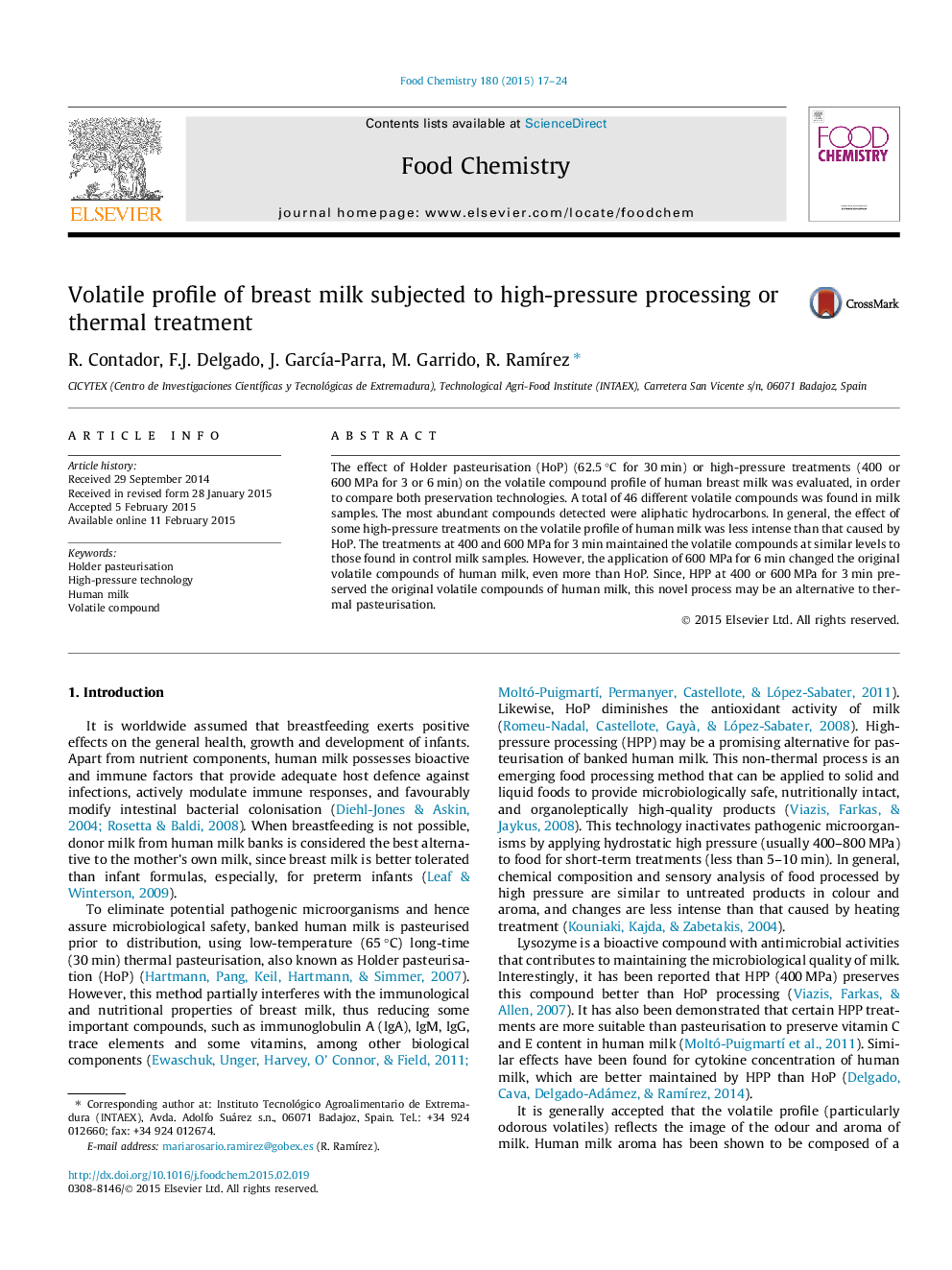| Article ID | Journal | Published Year | Pages | File Type |
|---|---|---|---|---|
| 1184472 | Food Chemistry | 2015 | 8 Pages |
•Thermal treatment caused variations in the profile of volatile compounds of breast milk.•Intense high pressure treatments produced strong modifications in the profile of volatile compounds of breast milk.•HPP at 400 and 600 MPa for 3 min maintained volatile compounds at similar levels to those found in control milk samples.
The effect of Holder pasteurisation (HoP) (62.5 °C for 30 min) or high-pressure treatments (400 or 600 MPa for 3 or 6 min) on the volatile compound profile of human breast milk was evaluated, in order to compare both preservation technologies. A total of 46 different volatile compounds was found in milk samples. The most abundant compounds detected were aliphatic hydrocarbons. In general, the effect of some high-pressure treatments on the volatile profile of human milk was less intense than that caused by HoP. The treatments at 400 and 600 MPa for 3 min maintained the volatile compounds at similar levels to those found in control milk samples. However, the application of 600 MPa for 6 min changed the original volatile compounds of human milk, even more than HoP. Since, HPP at 400 or 600 MPa for 3 min preserved the original volatile compounds of human milk, this novel process may be an alternative to thermal pasteurisation.
